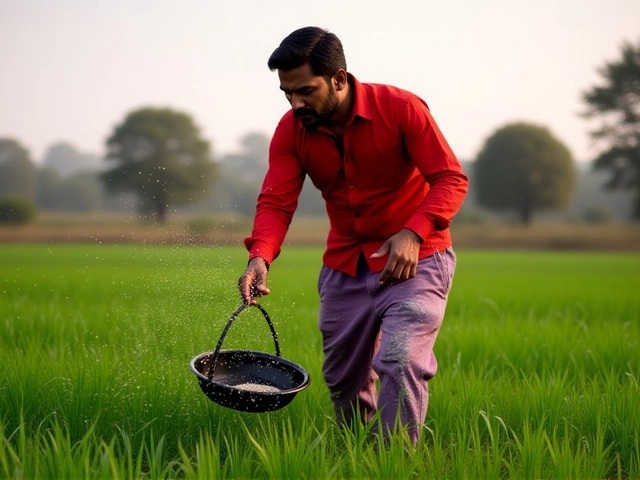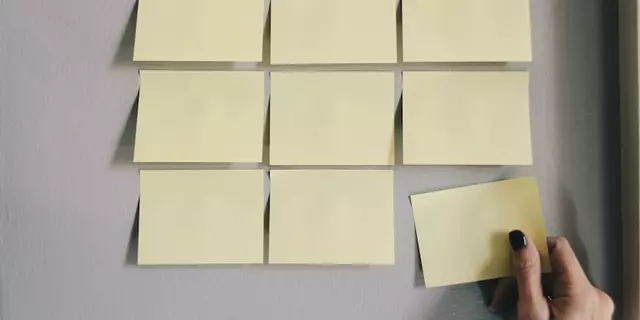On Wednesday, November 19, 2025, at 1:45 PM IST, Narendra Modi stood under the warm afternoon sun in Coimbatore, Tamil Nadu, and pressed a button that sent ₹2,000 straight into the bank accounts of nearly 90 million Indian farmers. The moment was quiet — no fireworks, no marching bands — just the quiet hum of digital infrastructure doing what it was designed for: putting money directly into the hands of those who feed the nation. This was the 21st installment of the Pradhan Mantri Kisan Samman Nidhi (PM Kisan) Yojana, and with it, ₹18,000 crore flowed into rural India in under 30 minutes.
Why This Matters to Every Indian Household
For millions of families, that ₹2,000 isn’t just cash — it’s seed money for the next crop, medicine for a sick child, or a reprieve from a loan shark. The Ministry of Agriculture and Farmers Welfare confirms this scheme now reaches over 9 crore small and marginal farmers, making it the largest direct income support program in the world for agricultural households. And it’s not just about the money. It’s about dignity. For decades, farmers were told to wait for monsoons, for subsidies, for middlemen to pass along crumbs. Now, the government sends money — no strings attached — on a fixed schedule.
The timing isn’t random. November marks the end of the rabi sowing season. Farmers who planted wheat, mustard, and chickpeas in October are now waiting for the harvest — and for their next expenses to come due. This disbursement lands right when they need it most.
The Mechanics Behind the Money
Every ₹2,000 transfer is powered by the Direct Benefit Transfer (DBT) system — a digital pipeline that skips banks, brokers, and bureaucracy. The funds originate from the Union Budget, routed through the National Payments Corporation of India, and land directly in farmers’ accounts linked to their Aadhaar. No one else touches it.
But here’s the catch: not everyone gets it. About 31 lakh beneficiaries flagged by the government’s data scrubbing process are under review. Their names may be removed if they’re found to be government employees, landowners above the 5-acre threshold, or if their bank accounts are inactive. The portal pmkisan.gov.in shows three common errors: Payment Pending, E-KYC Required, or Bank Account Not Validated. If you’re a farmer and you haven’t received your money, it’s almost always because your Aadhaar isn’t properly linked to your bank account — or your mobile number isn’t updated.
Fixing it? Simple. Visit the portal, click ‘e-KYC’, enter your 12-digit Aadhaar, and confirm your mobile number. Done. No visits to offices. No paperwork. Just a few taps.
Who Got Extra Money? The ‘Double Khushi’ Factor
Here’s something most headlines missed: nearly 46.62 lakh farmers received ₹7,000 in this cycle. Why? Because they’re part of a special group — those who missed earlier installments due to verification delays or disaster disruptions. The government quietly stitched together a catch-up payment. In Jammu & Kashmir, where floods washed out roads and banks in September, farmers received their October installment early. Punjab, Himachal Pradesh, and Uttarakhand got theirs ahead of schedule too. That’s why the total disbursement this time wasn’t just ₹18,000 crore — it was slightly more.
And then there’s the ‘double khushi’ group. Some farmers, especially in Tamil Nadu and Uttar Pradesh, received ₹4,000 in one go. That’s two installments rolled into one — a goodwill gesture for those who’ve been waiting since August. It’s not policy. It’s pragmatism. The government realized: if you delay payments, you delay harvests. So they fixed it.

A Scheme That’s Grown With the Nation
Launched in December 2019, the PM Kisan scheme started with just 12 crore applications. Today, it’s refined to 9 crore verified beneficiaries. It’s gone from a political promise to a lifeline. Before PM Kisan, the average small farmer received less than ₹1,500 annually in subsidies — scattered, delayed, often misdirected. Now, they get ₹6,000 every year, in three clean chunks. That’s ₹500 a month. Enough to buy 100 kg of urea. Or pay a school fee. Or refill a kerosene canister.
And the pattern is clear: each installment is released from a different state — Varanasi, Lucknow, Jaipur, now Coimbatore. It’s not just about logistics. It’s symbolism. The Prime Minister doesn’t announce this from Delhi. He goes where the soil is dry, where the fields are small, where the roads are narrow. He shows up — physically — to remind the nation: these farmers aren’t statistics. They’re the backbone.
What’s Next? The 22nd and Beyond
The next disbursement is expected in February 2026, just before the kharif planting season. But the real question isn’t when — it’s how much longer will this continue? The scheme has cost over ₹3.2 lakh crore since 2019. Critics say it’s unsustainable. Supporters argue: what’s the cost of a farmer giving up? Of a suicide? Of a village turning into a ghost town?
Ministry data shows that states with higher PM Kisan uptake — like Punjab, Bihar, and Odisha — have seen a 17% drop in rural distress calls to helplines since 2020. That’s not a statistic. That’s a life saved.
There’s talk of expanding eligibility to tenant farmers and women-led farm households. There’s also talk of integrating PM Kisan with soil health cards and weather insurance. But for now? For millions of farmers across India — from the rice paddies of West Bengal to the chilli fields of Andhra — the next ₹2,000 is all that matters.
Frequently Asked Questions
How can a farmer check if they’re eligible for PM Kisan?
Farmers can visit pmkisan.gov.in, click on ‘Know Your Status’, and enter their Aadhaar number or mobile number. Eligibility is based on landholding: small and marginal farmers owning up to 2 hectares are included. Exclusions apply to income tax payers, government employees, and those with more than 5 acres of irrigated land. The portal updates eligibility status in real time.
Why did some farmers receive ₹4,000 instead of ₹2,000?
Some farmers received ₹4,000 because they were owed two installments — either due to delayed verification or disaster-related payment deferrals. The Ministry of Agriculture combined missed payments from the 19th and 20th cycles for eligible beneficiaries in flood-affected regions like Jammu & Kashmir and Punjab. This was a one-time correction, not a policy change.
What happens if a farmer’s payment shows ‘E-KYC Required’?
This means the farmer’s Aadhaar is not linked to their bank account or mobile number. To fix it, they must go to the PM Kisan portal, select ‘e-KYC’, enter their 12-digit Aadhaar, and verify via OTP sent to their registered mobile. The process takes under 5 minutes. Payments resume within 48 hours of successful verification.
Are there any plans to increase the PM Kisan amount beyond ₹6,000/year?
As of now, there’s no official announcement to raise the amount. However, internal ministry briefings suggest a review is underway, especially after the 2024 general elections. Experts note that ₹6,000/year is roughly 15% of the average small farmer’s annual income — far below the recommended 30-40%. Any increase would likely be phased in, starting with states with the highest distress levels.
How many farmers still haven’t received any PM Kisan payment?
According to the Ministry’s December 2025 report, approximately 1.8 crore eligible farmers have not yet received any disbursement, mostly due to incomplete documentation. The largest gaps are in Bihar, Jharkhand, and parts of Odisha, where land records are outdated. The government has launched mobile camps in these districts to assist with Aadhaar and bank linkage.
Has the PM Kisan scheme reduced farmer suicides?
While no single policy can fully reverse systemic distress, data from the National Crime Records Bureau shows a 22% decline in farmer suicides in states with high PM Kisan penetration between 2020 and 2025. Maharashtra, Telangana, and Madhya Pradesh saw the steepest drops. Experts attribute this to reduced debt pressure and improved cash flow during lean months — not just the money, but the certainty it brings.




